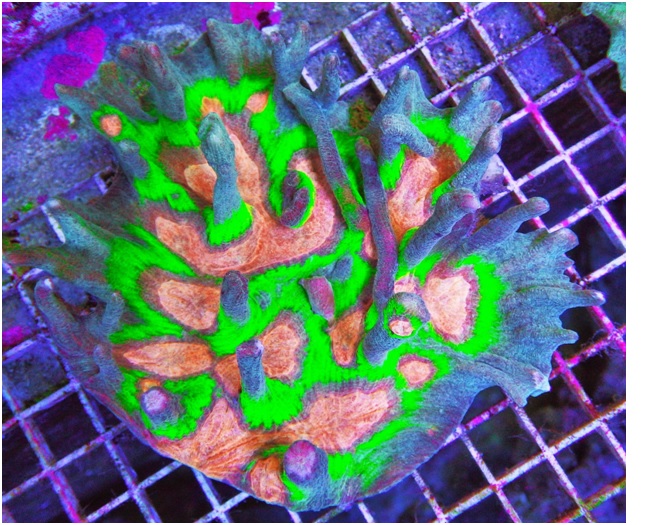
Pectinia alcicornis is an unusual large polyp stony coral that has recently become very popular due to its unique shape, stunning coloration, and regular consistent availability.
Over the years, the occasional Pectinia was imported from Fiji or other South Pacific islands into the hobby. While these corals had the weird characteristic spiked shape, they lacked the dramatic colors seen in specimens available presently from coral farms in Indonesia. Unlike wild collected colonies, these cultured corals are brightly colored, have very unusual shapes, and are easy to keep.
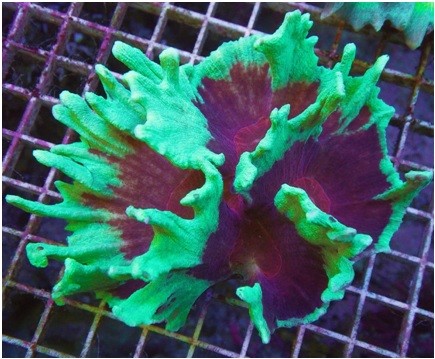 Coral farms in Indonesia I visit monthly grow Pectiniain in a variety of colors. Most of these cultured pieces are about 4 to 5 inches in size, and take about two years to grow from small fragments. Because these are cultured colonies and grown in captivity they are very hardy, unlike most wild collected specimens. They ship very well despite the 36 hour transit time from Indonesia to the USA with zero mortality.
Coral farms in Indonesia I visit monthly grow Pectiniain in a variety of colors. Most of these cultured pieces are about 4 to 5 inches in size, and take about two years to grow from small fragments. Because these are cultured colonies and grown in captivity they are very hardy, unlike most wild collected specimens. They ship very well despite the 36 hour transit time from Indonesia to the USA with zero mortality.
 These cultured Pectinia colonies do best under low light and in my systems are best kept under LED lighting that is predominantly blue because they are typically found in the wild in deeper murky water. Moderate water flow is best to prevent detritus from settling on their delicate tissue. They can be difficult to frag because the tissue is like a thin skin that covers their spiney skeletons. Fragging must be done with a clean diamond blade band saw using saltwater. Skeleton dust must not be allowed to adhere to the frags and they should be housed with moderate water flow for a few days until the cut edge has time to heal. If it is handled too roughly while being cut, within a few days the fragile tissue will recede or completely peel. Once the cut edge heals, the frag does well and grows relatively rapidly. Regular feedings with small pieces of meaty seafood is advantageous to long term health, growth, and coloration.
These cultured Pectinia colonies do best under low light and in my systems are best kept under LED lighting that is predominantly blue because they are typically found in the wild in deeper murky water. Moderate water flow is best to prevent detritus from settling on their delicate tissue. They can be difficult to frag because the tissue is like a thin skin that covers their spiney skeletons. Fragging must be done with a clean diamond blade band saw using saltwater. Skeleton dust must not be allowed to adhere to the frags and they should be housed with moderate water flow for a few days until the cut edge has time to heal. If it is handled too roughly while being cut, within a few days the fragile tissue will recede or completely peel. Once the cut edge heals, the frag does well and grows relatively rapidly. Regular feedings with small pieces of meaty seafood is advantageous to long term health, growth, and coloration.
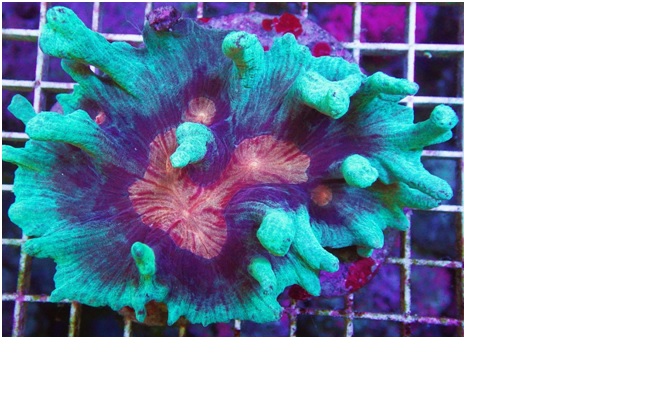
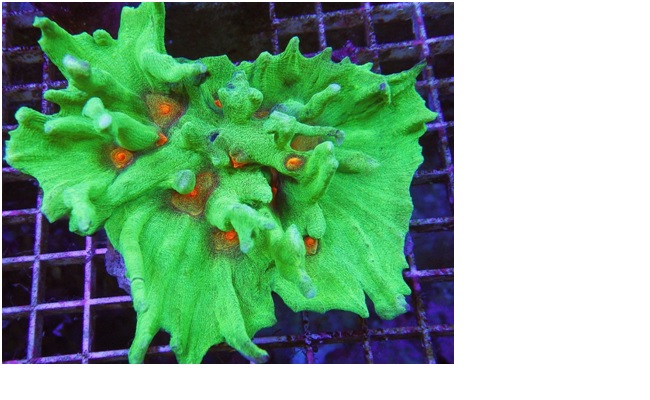
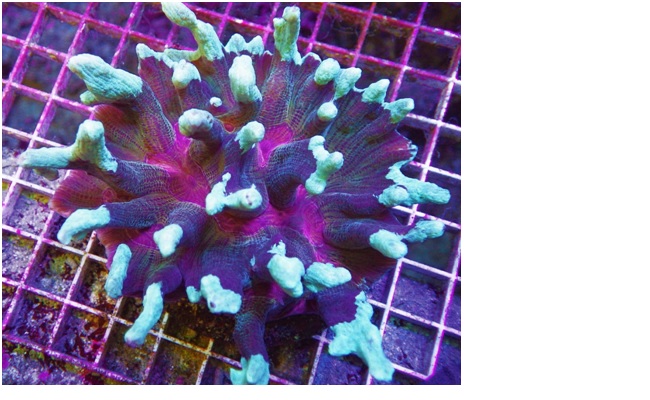
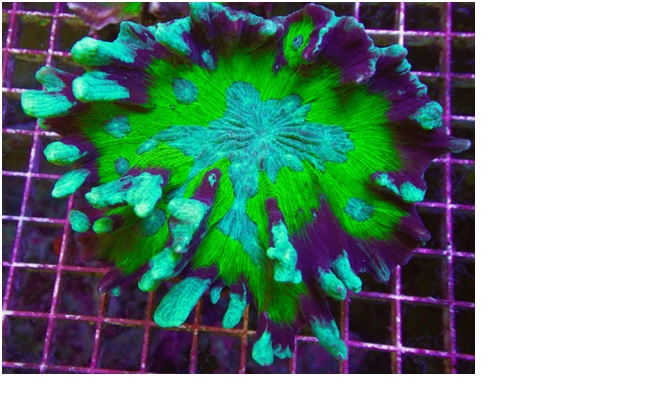










I have three pectina corals I got from PEA. They are really incredible, and as they grow, it’s wild the shapes they will assume.